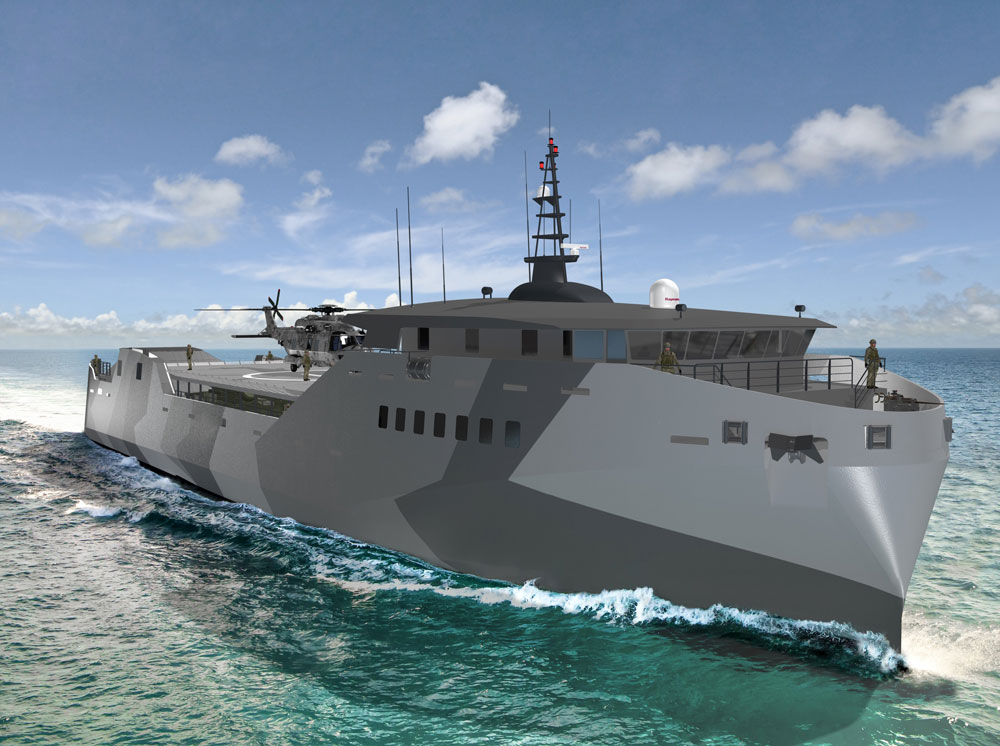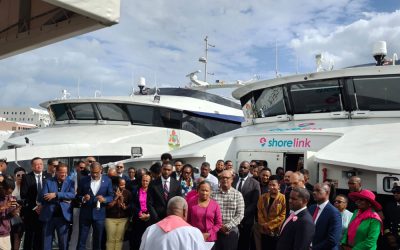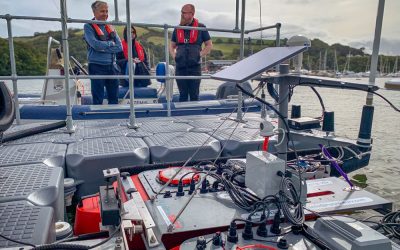A collaboration between class society Lloyd’s Register (LR), nuclear battery manufacturer Deployable Energy and naval architect Seatransport aims to realise a 73m-long, hybrid-powered stern landing vessel (SLV) incorporating two modular micro reactors (MMRs), in what may prove a step forward for the use of nuclear energy at sea.
The SLV project was given renewed focus after LR and its partners conducted a hazard identification workshop to assess the risks related to the installation of MMR technology aboard ships. The workshop, which was hosted at Seatransport’s HQ in Australia, focused on risk management strategies, regulatory frameworks, safety systems and vessel design – and shared “key insights into the feasibility and requirements for operational readiness once the vessel meets nuclear licensing requirements”, LR says.
The proposed SLV would have the ability to supply power to Pacific islands hit by cyclones and resulting energy blackouts. Seatransport comments: “At 14knots, the MMR-powered vessel can cover the region quickly and provide power to stricken areas to aid rescue efforts.” The SLV would also carry 84 container units, which could be repurposed as medical stations, sleeping areas and toilets for 750 people.
Besides emergencies, the SLV’s MMRs would be used to provide energy to islands and remote areas, helping their residents to reduce their dependence on costly diesel imports. Seatransport says: “For remote areas visited regularly, a simple concrete ramp and berthing pile should be installed.” However, the company adds, “cyclone-proof mini-ports” should also be constructed to shield the SLV from rough weather conditions when it is positioned alongside, supplying power to the grid.
The partners claim the MMRs will enable the vessel to operate for eight to 10 years without the need to refuel. Dr Stuart Ballantyne, Seatransport chairman, adds: “I believe [nuclear propulsion] for commercial ships…is within reach and will be commonplace by 2030.”
Houston-based Deployable Energy, meanwhile, is developing its Unity nuclear battery, intended to generate 1MW of electrical power. Physically, the Unity-powered MMR has been designed to fit inside a standard 20’ shipping container, making it transportable by truck, ship or cargo aircraft. Described as a “plug-and-play system”, it has been developed for rapid set-up and deployment, reportedly taking no more than three days to install.
Bobby Gallagher, Deployable Energy CEO/CTO, comments: “Powered by our Unity nuclear battery, this next-generation vessel runs cheaper than conventionally fuelled ships, using safe, standard fuel with no exotic materials.” Looking beyond this project, Gallagher adds: “Our target is to have 100,000 nuclear batteries deployed by 2040, with a delivered cost of US$0.05 per kWh.”
LR will provide approval in principle (AiP) to the finalised design.




